Smoke and PicklesRecipes and Stories from a New Southern Kitchen
A multiple James Beard Award nominee for his unique patchwork cuisine, Edward creates recipes–filled with pickling, fermenting, frying, curing, and smoking–that reflect the overlapping flavors and techniques that led this Korean-American boy to feel right at home in the South.
Chef Edward Lee’s story and his food could only happen in America. Raised in Brooklyn by a family of Korean immigrants, he eventually settled down in his adopted hometown of Louisville, Kentucky, where he owns the acclaimed restaurant 610 Magnolia. A multiple James Beard Award nominee for his unique patchwork cuisine, Edward creates recipes–filled with pickling, fermenting, frying, curing, and smoking–that reflect the overlapping flavors and techniques that led this Korean-American boy to feel right at home in the South. Dishes like Chicken-Fried Pork Steak with Ramen Crust and Buttermilk Pepper Gravy; Collards and Kimchi; Braised Beef Kalbi with Soft Grits and Scallions; and Miso-Smothered Chicken all share a place on his table. Born with the storytelling gene of a true Southerner, Lee fills his debut cookbook with tales of the restaurant world, New York City, Kentucky, and his time competing on Top Chef, plus more than 130 exceptional recipes for food with Korean roots and Southern soul.
Edward Lee is a Korean-American who grew up in Brooklyn, trained in classical French kitchens, and has spent a decade in Louisville, Kentucky, where he is chef/owner of the acclaimed 610 Magnolia. A three-time James Beard finalist for Best Chef: Southeast, he survived 14 weeks on the 2012 season of Bravo’s Top Chef, successfully challenged culinary royalty on Food Network’s Iron Chef America, and has appeared on all the national morning shows. He writes a column for Organic Gardening magazine, and has been featured in Bon Appetit, Gourmet, The New York Times Magazine, Esquire, and many other national publications.
New dad Edward Lee is a Brooklyn kid. He has worked in some of the finest restaurants that New York City had to offer. He traveled to France to hone his craft and focus on becoming a chef in the classic way. It was during a visit to Louisville that things took an unexpected turn. In a business where being exceptionally busy is the norm Edward Lee has been busier than most. Despite this he recently talked to Booksaboutfood.com about among other things, bourbon, the sixth and seventh taste senses and most importantly Smoke and Pickles his eclectic and surprising first book.
Booksaboutfood.com (BAF): Could you just give us the timeline of how things have progressed these last few months?
Edward Lee: The restaurant (Milkwood) opened in March, so we had a little bit of time to get that all set up, and really the baby came in April 29th, and the book launched on May 1, just a few days after.
BAF: You’re a Brooklyn guy. How did you wound up in Louisville?
Edward Lee: I lived in New York my whole life, and I had never really experienced much outside of New York and New Jersey, and I just felt like there was something missing, both from a personal standpoint and from a culinary standpoint. Like most chefs, you do your thing and then you go off to Europe and you learn European cuisine. I never really explored what I think of as American cuisine or what that meant to me. I never really bothered with it, and that kind of bugged me.
It was post-9/11, I knew I kind of wanted to take a break from New York for a while. I didn’t know it was going to be permanent, and I just started taking some road trips out and calling up friends, seeing if they knew of anything. I had a friend of a friend who used to come to my restaurant in New York, was from Kentucky, and she said, “There’s this interesting little restaurant in Louisville that always needs help during Derby and I’m sure if you call them, they’d put you up.” I thought that was a great idea, so I really just called them and said, “Hey, you want an extra hand for Derby?”
I went down there to have fun. Obviously, it turned into something much bigger.
BAF: What was it about the local scene there?
Edward Lee: For me, the immediate thing was the closeness to the farms and the accessibility to the farm food that in New York, obviously, you can get anything, but it’s a very difficult hike to actually go to a farm. They come to you. That right there was just so very different. You get in your car and 20 minutes later you’re in the middle of a field with some animals. That was very attractive to me, and there was something here. I felt like it was a very cool city. It had all the things it needed to be a great true town, and it wasn’t when I got here. I just felt like it was worth checking out and staying. For some reason, there’s something about it too that’s intangible that I really did feel like home here.
Also, I think it goes one step further and there is a real history here and a real sort of tradition. I think in many parts of America, not just Kentucky, there was a time when the old ways of culinary history became, not lost, but somehow muddled. One of my things now, the more of course, like anything, the more you investigate, the more you discover new things and then it almost becomes sort of a responsibility now. I keep delving into old cookbooks and keep talking to the older generation, and the more I do, the more cool stuff I discover, so it just keeps going on itself.
BAF: Was one of the things that you wanted to point out was the diversity of southern food?
Edward Lee: Yeah. It’s very diverse, and it just depends on what angle that you look at it at, but of course, there’s a ton of diversity and history. It’s just a fascinating ride.
BAF: What was your goal of the book? Was it to showcase your restaurant’s food or your own ideas or concepts?
Edward Lee: My immediate goal was, how do I make a cookbook that people are going to be interested in? You just go down that road, and you see what… to me, it’s a very personal project. My food and everything has to be personal. I pretty much wear my emotions on my sleeve and I wanted to, when it came time to tell the cookbook, I really wanted to tell a story and to tell a narrative and to make it seem more than just interesting recipes…you can get recipes anywhere, go online. I really wanted to connect the recipes to why these recipes or how they came about, where they came from. I wanted to tell a picture or tell a story about the environment that I lived in, moved through and now live in, in order to give a better understanding of how these recipes came about. They weren’t just were made in a kitchen trying to think of clever things. It really came out organically through this whole process.
BAF: You really took the time to write the story and the histories and where you were and how you came upon these things.
Edward Lee: It’s just really important for me, and it was very interesting because obviously with recipe testing, the creative process is one thing, the recipe testing was very scientific or very methodical. With the writing, it was very different. For me, it was a very left brain/right brain kind of activity. I would test recipes during the day and then I would stay up at night and try and write. Sometimes, you’d have a good night, and sometimes you’d sit there and spend three hours and write one paragraph.
With kitchen work, I’m always used to, if you put in five hours of work, you’re going to get five hours of productivity. It’s just the way it is, and with writing, you’re not guaranteed anything. You can put five hours into it and you may just throw everything out. It was a very interesting challenge. I really loved it, frustrating, very frustrating at times. I kind of compared it as when you’re in the kitchen, everything is based on time, everything, whether it’s a timed recipe or you time how long it takes to chop a carrot.
With writing, it’s timeless. There is no chronological order to anything. There’s no time limits. There’s nothing. It really does allow you to escape from this daily grind in ways that I really enjoyed it, but if you don’t produce anything, it can be also very frustrating.
BAF: You’ve got such a wonderful eclectic collection of recipes, are these all recipes that you’ve served in your restaurants over the years or things that have just come to your mind for this book?
Edward Lee: I would say half and half, maybe more, maybe 60/40. A lot of the things, even though we haven’t served them, I’ll pull elements or flavor. Some of them, we use the garnishes and something, and I’ll sort of pull that and reconfigure it. Obviously, the restaurant food we do here is pretty complicated, so I did not want to overwhelm the home cook and say, “Listen, you have to do this and you need this kind of equipment and 22 hours.” We did really make an effort to pull the same flavors but reinterpret them in a way that you can do some recipes at home.
BAF: You’ve got the new line of bourbons out.
Edward Lee: It’s coming out with Jefferson’s Reserve, and we’re calling it Chef’s Collaboration. It’s me and Trey Zoeller, who’s the distiller here. We’re friends. We started as friends, and we just were walking around and talking one day and we thought it would be cool to do a bourbon that was really elegant, high end but there was a conscientious effort to really make bourbon a pairing with food and not just something that you drink before.
I just did a 20-city book tour and everywhere I went, incredible bourbons everywhere.
BAF: Is bourbon an ingredient that you discovered after moving to the south or was it something you were familiar with?
Edward Lee: I was familiar with it probably on a very basic level. When you first discover it, it becomes something that you immediately want to do with dessert because it has the obvious caramel, sort of vanilla notes to it. I think the more you delve into it, the more you cook with different kinds of bourbon, different ages and vintages, you realize that there’s some really nice savory applications. Obviously, the older your bourbon, the more smokier notes it’s going to pick up, and that to me is when it starts to get really exciting, because then you can start to add smoky flavors to your cooking without actually smoking anything in a traditional smoker. That’s the golden egg that I’m always searching for is to be able to create smoke flavor in foods without bombarding your face with it. When you add bourbon to savory dishes, it adds just a touch of smokiness that’s very subtle. It’s very on the back end, but it’s definitely there.
I always say that people talk about the five tastes, sweet, sour, salty, bitter, unami, and I think there’s six. Actually, I think there’s seven, but the sixth one would be smoke flavor…It’s completely distinct from the other five. It’s very specific. You taste it differently in your mouth. You smell it differently, and it’s a flavor profile that I think it’s funny that we’ve just ignored when it’s one of the most important flavor components in many different cuisines, whether you’re charring something, whether it’s making naan bread in a traditional clay oven. Without that charred smoke flavor, that bread doesn’t mean anything. There is that and I think we’ve kind of overlooked that as just a garnish, but it really is an essential flavor that’s in a lot of the foods that we enjoy.
BAF: The seventh one would be?
Edward Lee: It’s capsaicin. Again, we don’t think about it because it’s hot, but it really is very distinct from the others…Every chef uses spice, just a touch of chili flakes here, a little habanero there, and it adds a completely different layer to your food. Again, it’s funny that people talk about these five things and they leave out spices. You can take any dish that you come up with and I can add just a little bit of capsaicin to it and it’ll lift the dish, brighten it up. Again, it’s one of those things that’s my next thing as I’m exploring spice and not spice as in cumin, paprika spice but actual capsaicin spice, hotness. You use it in a subtle way that it doesn’t always have to be melt-your-face hot. You don’t have to taste it. It can be used in very soft and subtle ways to enhance very elegant dishes.
BAF: It’s one of those things people either don’t use it or they use too much?
Edward Lee: Right. It’s kind of like a either/or and I’m always saying, “That’s not true. I can add a little bit of heat.” You take a creamy penne pasta and add just a little bit of heat to it, even if it’s black pepper. People go, “Oh, I can’t eat spices,” and I just say, “I just added a little jalapeno to that. You didn’t taste it, but you felt it. Your body temperature went up half a degree and your pores just opened up and your taste buds just opened up.” It’s very interesting to me. People say, “Oh no, I can’t eat spicy things,” which means that they don’t want to melt their face off, and I understand that, but you can actually use spices in almost everything we do in very small levels. It’s an interesting topic for me.
And I actually think there’s some food, like chocolate, it makes the chocolate taste better and it gives it a different spice is very interesting. If you play with it and you’re subtle and you know how to use it, it will actually make other things taste better or different. You don’t think of tropical fruits but like mango for example, mango tastes completely different when you add a layer of spice to it. It becomes a savory, musky flavor profile and not like a sweet-tart thing.
We just tilled a bunch of land and next summer, we’re going to grow 20 different chili peppers and just to play around with them. That’s my next obsession.
Booksaboutfood.com © 2013
The most rewarding dishes to me are the ones that coax complex flavors from the humblest of ingredients. My first vinegary, salty bite of braised collards was a revelation. It took me back to the experience of eating cabbage kimchi, another precious dish that arose from poverty but has come to impress even the most sophisticated palates. I love these intense flavors from two cultures that are worlds apart, and somehow they work together harmoniously, as if they belong together.
Collards and Kimchi goes nicely with roast lamb or fried chicken.
Feeds 6 to 8 as a side dish
1 tablespoon lard or bacon fat
1 tablespoon unsalted butter
1 cup chopped onions
1½ cups diced country ham (about 10 ounces)
1½ pounds collard greens, washed, stemmed, and coarsely chopped
2½ cups chicken stock
2 teaspoons soy sauce
1½ tablespoons apple cider vinegar
8 ounces (1¼ cups) Red Cabbage–Bacon Kimchi (page 166), or store-bought (see note), chopped
1. Heat the lard and butter in a medium pot over high heat. Once the butter starts to foam, add the onions and sauté for 5 minutes, or until they get a little color. Add the ham and cook for 3 minutes, until it is crispy but not too brown. Add the collards, chicken stock, and soy sauce, cover, and cook over medium heat for 30 minutes, stirring occasionally. Taste the collards: They should be tender but still have a little chew to them.
2. Add the vinegar to the greens and cook for 1 minute.
3. Toss the kimchi into the pot with the greens. Mix together, and serve immediately, juices and all.
NOTE: If you’re buying premade kimchi from an Asian market, pick one that is well ripened. Look for cabbage that is almost translucent and notice a smell. Ripe kimchi can smell pungent and sour even through a glass jar.
Excerpted from Smoke & Pickles by Edward Lee (Artisan Books). Copyright © 2013.
Photographs by Grant Cornett.







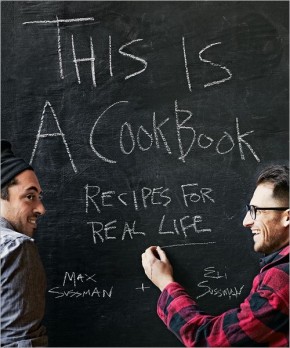

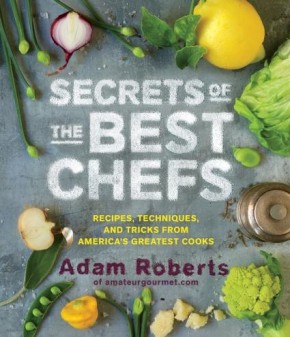
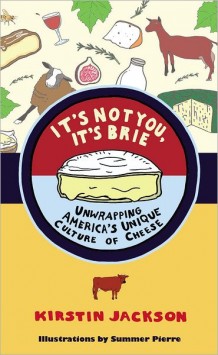
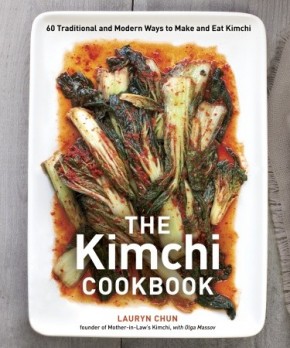
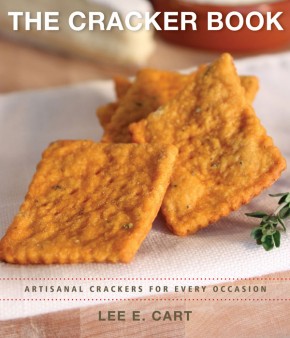
Leave a Reply